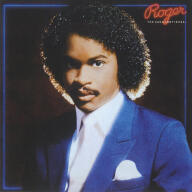It wasn't long before Roger and his brothers became enraptured by such funk/rock artists as Jimi Hendrix, the Isley Brothers, Stevie Wonder, and Funkadelic, whose earthy sounds began to reflect in the brothers' own music. Playing shows all over the U.S. and Canada, the group added another Troutman brother to their ranks by 1977, Terry, who went by the nickname of "Zapp," which soon became the group's new name. Shortly thereafter, Bootsy Collins' brother, Phelps Catfish Collins, happened to catch a gig by Zapp, who put them in touch with Bootsy, who then brought them to the attention of George Clinton. Clinton promptly signing the group to his own custom label, Uncle Jam (a subsidiary of Columbia Records). Taking Roger and company under his wing, Clinton got the group's leader a performance spot at the first (and only) Funk Awards in December 1979, introducing Roger Troutman as the most talented musician he'd ever seen in his life. His show-stopping performance created a buzz for Zapp's self-titled debut release, issued in 1980 (due to contractual red tape, the album ultimately was not issued via Clinton's label, but through Warner Bros.).
Zapp (who also went by the name of "Zapp Roger") quickly established themselves as one of funk's finest, issuing such further albums as 1982's Zapp II, 1983's Zapp III, 1984's The New Zapp IV U, and 1989's Zapp V; in addition to spawning such hit singles as More Bounce to the Ounce, Be Alright, Dance Floor (Part I), Doo Wa Ditty (Blow That Thing), I Can Make You Dance (Part I), and Computer Love. Along with his Zapp duties, Roger also made time to issue solo albums (mixing RB standards with originals), including such titles as 1981's The Many Facets of Roger, 1984's The Saga Continues, 1987's Unlimited!, and 1991's Bridging the Gap; while scoring such hit singles as a cover of I Heard It Through The Grapevine (Part I) and I Want to Be Your Man.
But by the end of the '80s, the hits and the public's interest in the group began to dwindle. Just as it appeared that Zapp Roger had fallen off the radar screen by the early '90s, a whole new generation of rap and RB artists began sampling bits from the group's catalogue; including such renowned artists as MC Hammer, Kris Kross, Blackstreet, Michael and Janet Jackson, Ice Cube, Dr. Dre, Tupac Shakur, and Snoop Dogg. As a result, there was a new heightened interest in the Zapp Roger, as evidenced by the brisk sales of the 1993 17-track collection All the Greatest Hits, which obtained platinum certification by 1996. However, tragedy was lurking right around the corner, as Roger was shot to death on April 25, 1999, by his brother Larry (who then turned the gun on himself). In 2002, a reissue of The Many Facets of Roger was released via Rhino Records, which included several previously unreleased bonus tracks. ~ Greg Prato, Rovi


















